Just in time for National Cheeseburger Day, here's how to make the perfect cheeseburger
On Sept. 18, we get to shout Happy National Cheeseburger Day! (Don't shake your head — of course, there's a "holiday" dedicated to the glory that is a cheeseburger.)
And whether or not you believe the urban legend that the cheeseburger was invented right here, what better place to celebrate than in Louisville? You could do it by hitting up one of the slew of restaurants serving up amazing burgers, or you could go all out at home with a DIY burger bar.
We opted for the latter as a way to pay homage to the city that claims to have invented the cheeseburger, complete with all the fixings.
Since I’m a firm believer in doing something big if you’re going to bother doing it, we opted to feature Kentucky Wagyu beef for our burgers, because of course what’s a cheeseburger without a worthy co-star?
Last summer, Black Hawk Farms in Princeton, Kentucky, launched a high-end line of American Wagyu called the Reserve Label, and I’ve been looking for an excuse to sample it.
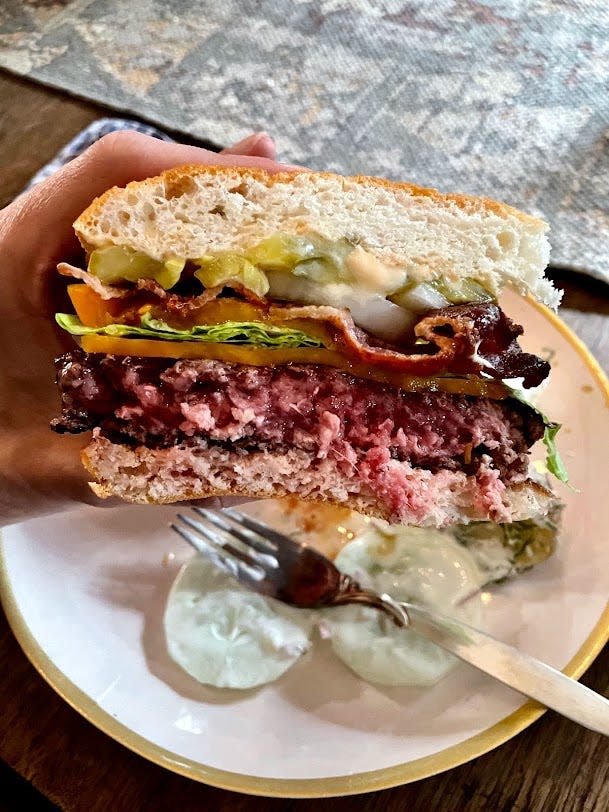
(Sidenote: Did you think Wagyu only came from Japan? Same. Turns out that while the herd’s origins are from the acclaimed Wagyu cattle of Japan, these cattle are cross-bred with a heritage line of Black Angus cattle.) The cattle at Black Hawk Farms are humanely raised on Kentucky grass, and unlike many conventional cattle farms, instead of sending the cows out west to finish on commercial feedlots, they’re finished on the farm’s own corn. In fact, the entire seed-to-slaughter process happens within a 25-mile radius of the farm.
Black Hawk Farm’s products, which have for years been popular in the culinary world, became available directly to consumers in 2020. The Reserve Label cuts are wet aged, pre-portioned, vacuum-sealed, and blast frozen, shipped on locally produced dry ice. A two-pound pack is $19.50.
And with that, here’s your DIY guide to the home burger bar. (First, if you are using the Black Hawk Farm Wagyu, plan ahead to thaw the burgers, because they arrive rock-hard.)
Add the following items to your shopping list to make the ultimate DIY burger bar at home:
Don't skimp on the cheese
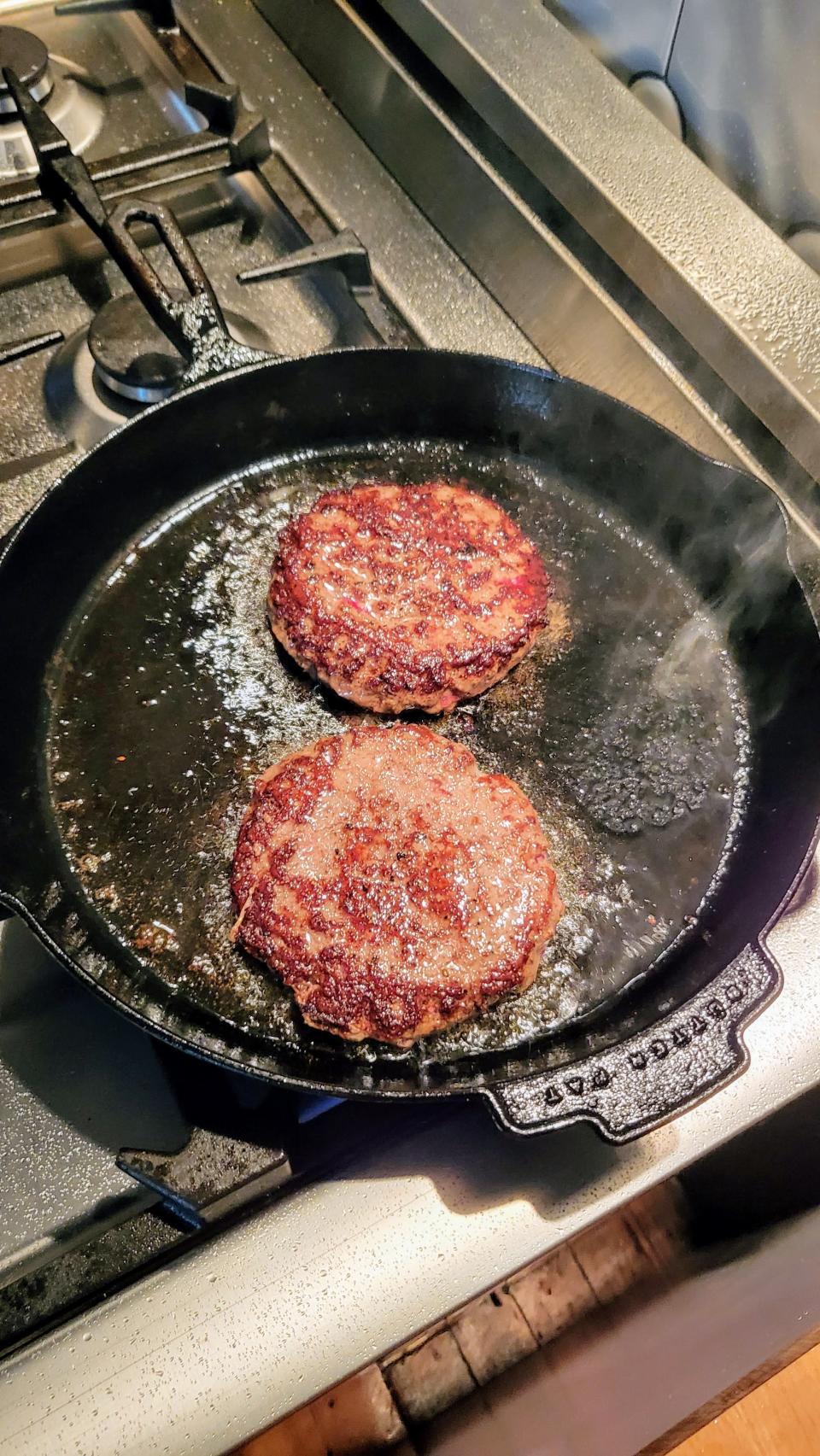
There's no right or wrong cheese to add to your DIY cheeseburger. You can go classic here, with American singles, or get as fancy as you like. We did sharp cheddar for this meal, but have also played with soft cheeses like brie, which adds a different umami to the burger experience.
Do shake up your condiment game
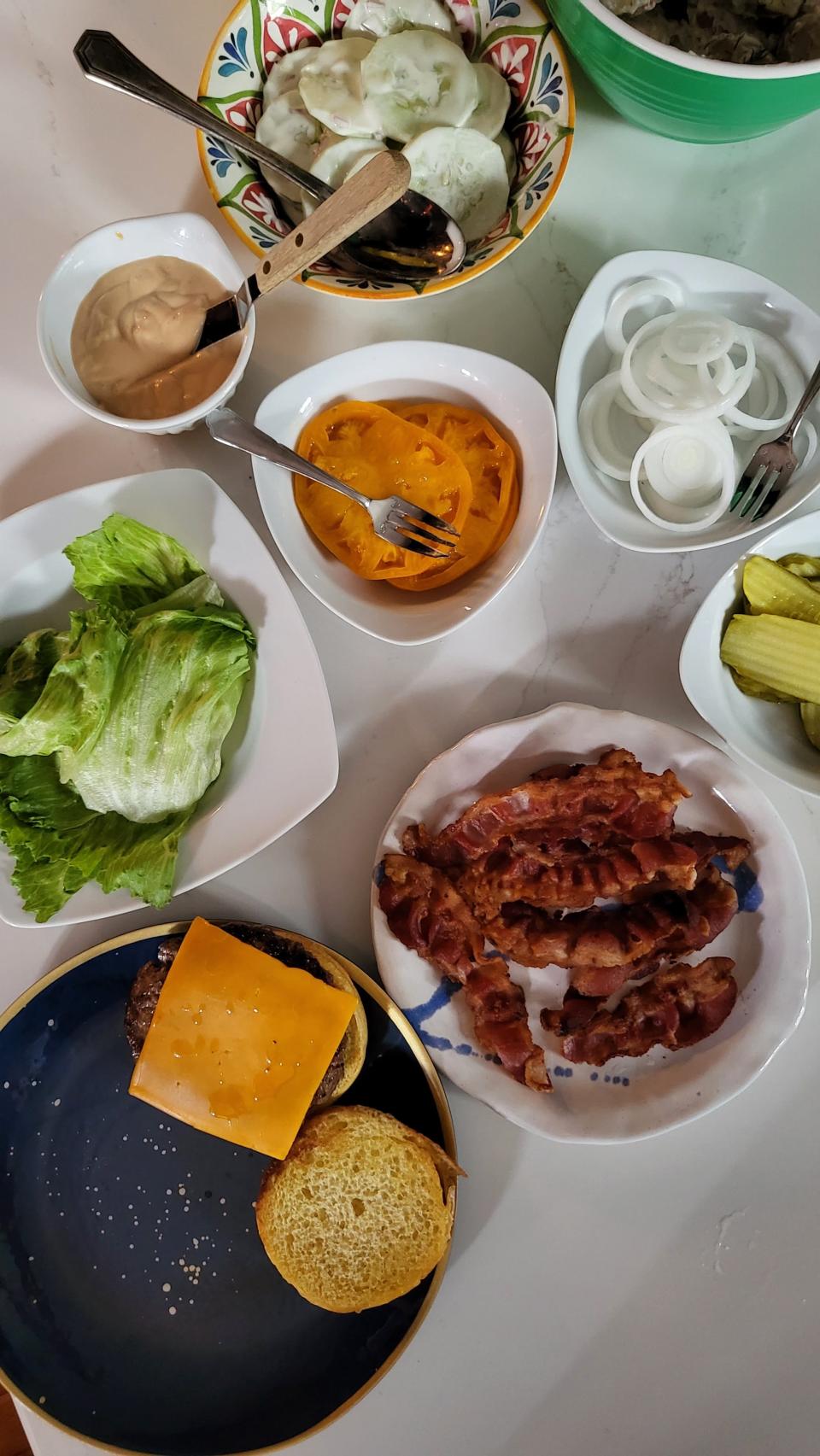
In our house, we believe in a riff on Shake Shack’s popular sauce. It’s basically all your condiments mixed together in about a four-to-one ratio of mayo to ketchup and yellow mustard (based on the splattered and stained Serious Eats recipe we use). Add in some dill pickle juice or finely chopped pickles, a dash of garlic powder and paprika, and a pinch of cayenne, or any of these to taste.
You may like: Want a delicious cheeseburger? Look no further than these 8 Louisville restaurants
Of course for purists, you could set out the individual bottles of all of those goodies and people can add as much, or as little, as they'd like to their cheeseburger.
Make sure to add some veggies
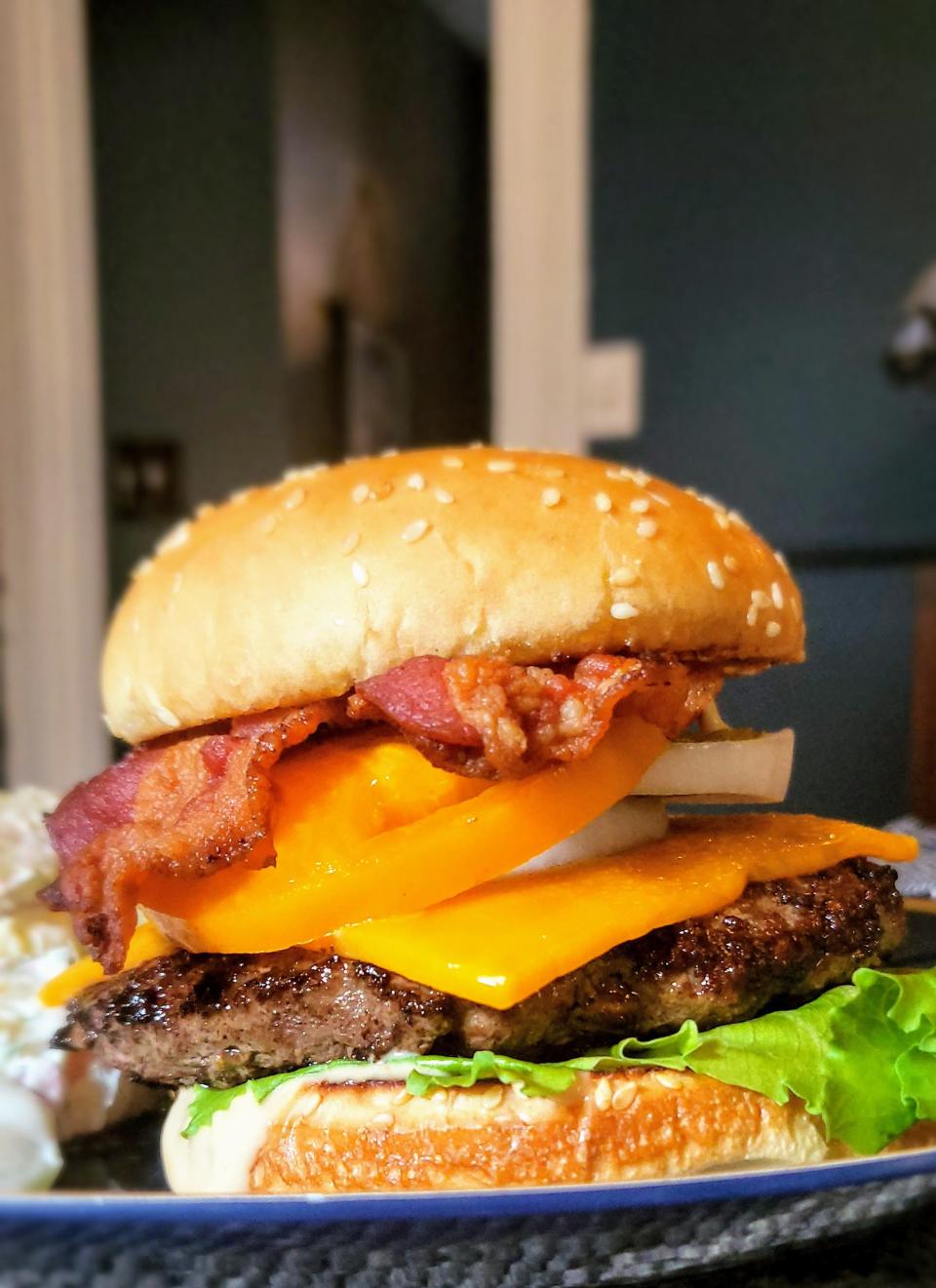
We kicked it old school for this DIY burger bar with simple iceberg lettuce leaves, sliced heirloom tomatoes, dill pickles, and onion slices, but the sky is the limit here. Try fancier greens like arugula, cucumbers, avocado, radish, cabbage slaw, or veer into fruits with fig jam (especially with that aforementioned brie).
Honestly, if it can go in a salad, it could go on your burger. Don't be afraid to try something new and different and combine your favorite flavors.
Extras special toppings? Go for it
In this house, it's crispy bacon for the win. If you don’t mind the last-minute pressure, how about adding some fried eggs to your cheeseburger? I love caramelized onions, but pickled could also be fun. Anything goes!
How 'fancy' your bun gets is up to you
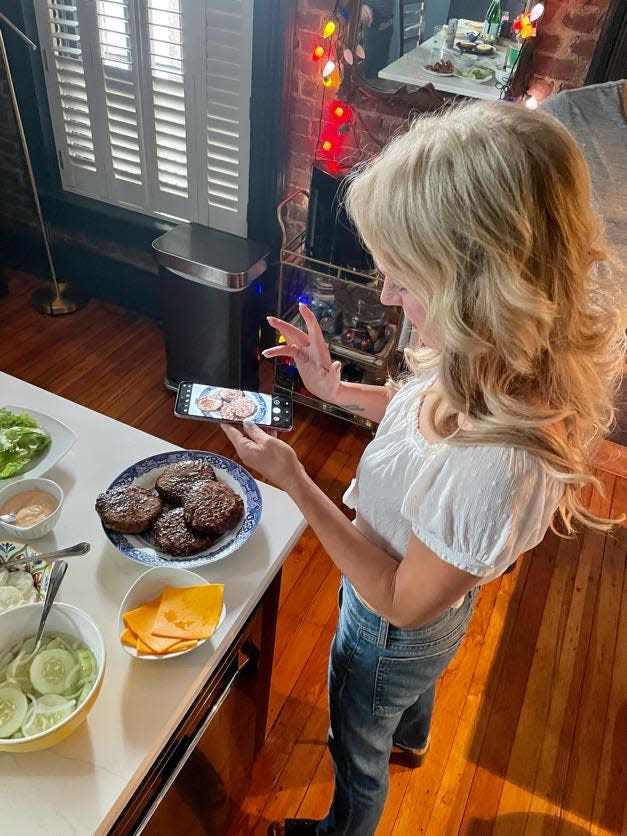
We offered brioche, gluten-free, or classic sesame at this recent DIY burger bar, but another favorite in our house is squishy potato buns. I don’t feel the need to get fancy with the bun — it’s just a vehicle. But if you do feel the need to get fancy, with say, a locally made pretzel bun, go for it.
You may like: Louisville urban legend: Did Kaelin’s really invent the cheeseburger?
Don't forget to pre-plan your sides
Obviously, some form of potatoes is required if you're a traditional cheeseburger enthusiast. We did a creamy dilled potato salad, which was nice because we could prep it early, but often we do fries, all the better for sauce dipping. Burnt Brussels sprouts are another frequent burger companion at our house. Cucumber salad two ways made an appearance this time, but a homemade coleslaw could also be nice.
Prepping your DIY burger bar at home

Try to plan for advance prep on anything you can so you can tend to the burgers with as little distraction as possible. That means you should prepare any cold sides, slice your veggies, portion out the cheese, gather your condiments and mix up your sauce before you get down to the burgers.
You can even go ahead and butter and toast your buns and set them aside, or plate them. Be sure the burger patties are kept in the fridge till the last minute, because you want them good and cold, according to Black Hawk farms chef Andrew Whitney.
When it’s time, get your favorite cast iron skillet blazing hot, and gather the patties. You can ask your guests how they like their burger, but if they say more than medium-rare, they’re probably not at our house (kidding, not kidding), so you could instead just make them as nature intended: a beautiful crust on the outside and pinky-red on the inside.
You may like: The Courier-Journal's picks for the best cheeseburgers in Louisville
Get ready to destroy your stove area because these Black Hawk Farms are a decadent 73/27 lean-to-fat ratio, and delicious grease will splatter everywhere. (If you have dogs, watch out: they will be very close to the action!) Oh, and of course have a separate clean plate to transfer the cooked burgers to, and use clean utensils. Anything that’s touched raw beef is a no-go.
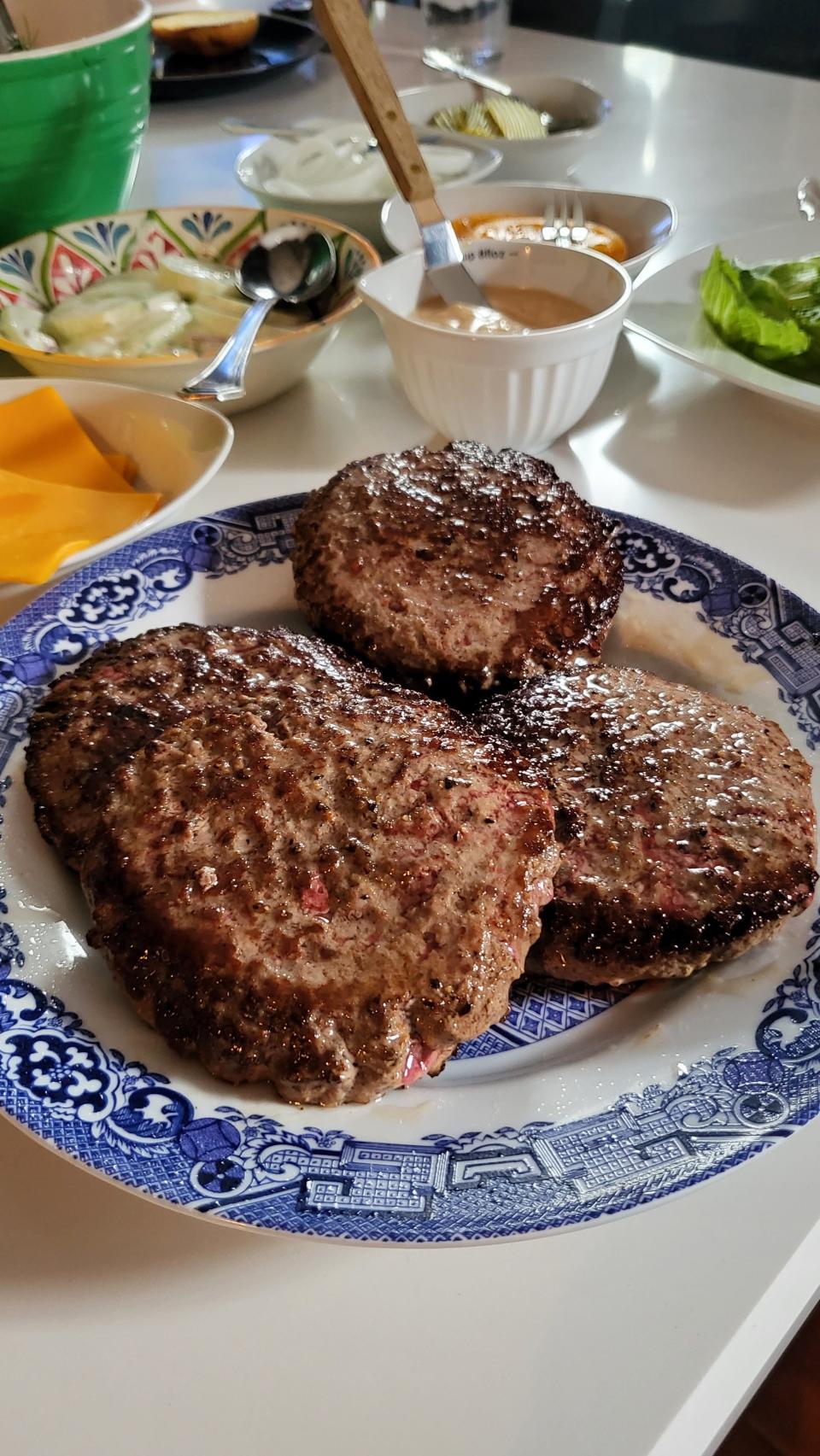
Salt the patties generously (more than you think, according to every chef I’ve ever talked to!) and tell everyone to stand back. Throw those puppies in the pan (we fired up two so all four burgers could finish at once) and let the mouthwatering begin. The USDA says ground beef should be cooked to 160 degrees internal temp, so I’ll tell you to take their advice rather than following my lead, considering I basically want the cow to walk through a warm room for my preferred doneness.
After you flip, add the cheese so it can get nice and melty (it’s not the end of the world if you forget as I did, but it’s a nice touch!).
Move the finished burgers to a plate to rest briefly while everyone builds their buns.
That’s it! Then linger at the table as long as possible over the meal, which is easier said than done. After all, a lot of work and care went into raising the beef, growing the goodies that accompany it, and of course, making this dinner.
Tell Dana! Send your restaurant “Dish” to Dana McMahan at thecjdish@gmail.com and follow @bourbonbarbarella on Instagram.
This article originally appeared on Louisville Courier Journal: National Cheeseburger Day 2022: How to make the perfect cheeseburger

